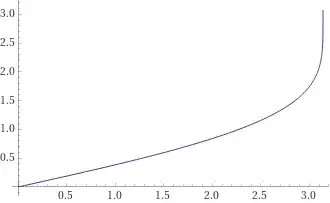Context
For an eccentricity, $e$, Kepler's Equation is given as \begin{align*} M &= E - e\, \sin {\left(E\right)} \end{align*} For a historical treatment of Kepler's equation and how to invert it, see [1] and references therein.
Question
Let $E$ be such that $E = [-\pi, \pi]$ and $M$ be such that $M = [-\pi, \pi]$. I have a form reminiscent of Kepler's Equation, which is \begin{align*} M &=E - \, \sin{\left( E \right)} \, \left(- \dfrac{2}{3 } \,\cos^2{\left(\dfrac{E}{2}\right)} - 1\right) \end{align*} How can I invert the above to find E(M)?
Bibliography
[1] Colwell, P. Solving Kepler's Equation over Three Centuries. Richmond, VA: Willmann-Bell, 1993.
